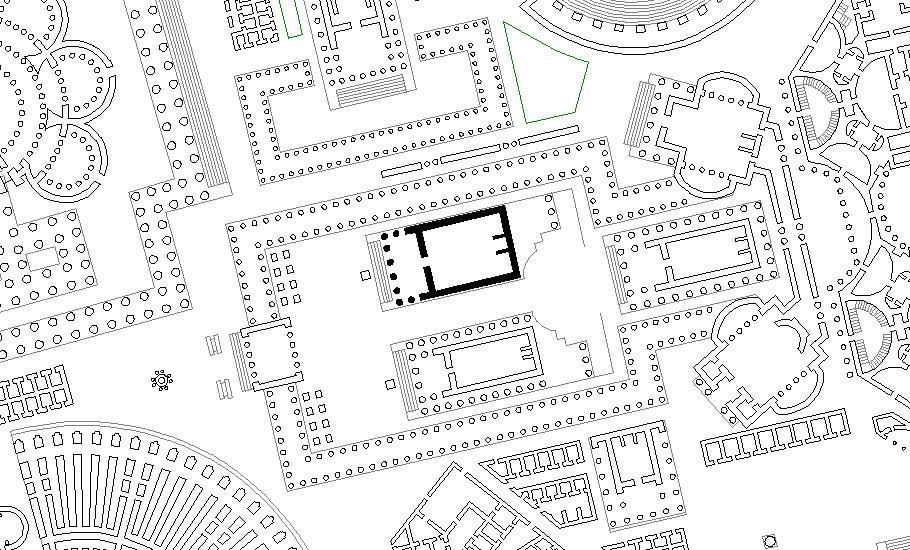| Encyclopedia Ichnographica | Aedes Junonis | 1 |
|
| The temples of Juno and Juppiter Stator. In 147 B.C. Q. Caecilius Metellus Macedonicus enclosed these two temples within his porticus. It is not clearly stated whether he built the temples at this time or not, but it more probable that one or both of them were already in existence. Both temples were restored by Augustus; burned in 80 A.D.; again rebuilt, probably by Domitian; and were standing in the fourth century. They were parallel to each other, and faced southwest. Both are represented on the Marble Plan, the temple of Juno being hexastyle prostyle, and the temple of Jupiter being hexastyle and peripteral, with eleven columns on a side. The exact site of each temple is known, that of Jupiter being mainly beneath the church of S. Maria in Campitelli. The ruins of these temples are concealed for the most part by modern houses in the via di S. Angelo in Pescheria, and consist chiefly of substructures and the walls of travertine and opus reticulatum, with fragments of marble columns and entablatures. Three fluted columns of white marble belonging to the temple of Juno, 12.50 meters in height and 1.25 meters in diameter, with corinthian capitals and entablatures, may be seen in No. 11 of the street just mentioned. (Platner) |
Quondam © 2017.11.07 |
